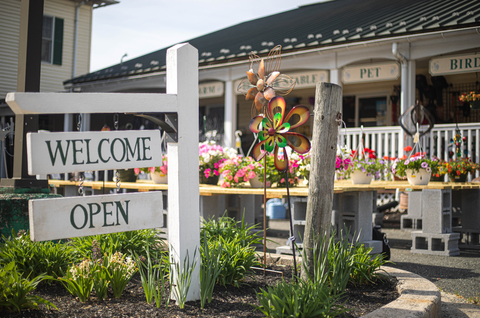Winter is a challenge for houseplants. Shorter days, lower light, and dry heating require extra care for plants to thrive. Here are some practical tips to ensure your indoor garden stays lush and healthy all winter long.
1. Adjust Watering Habits
In winter, many houseplants enter a dormant phase requiring less water than during their active growing season. Overwatering is one of the most common problems during this time, leading to root rot.
-
How to Check: Allow the top 1-2 inches of soil to dry out before watering. Stick your finger into the soil to test moisture levels.
-
Pro Tip: Water in the morning so any excess moisture can evaporate during the day.
2. Increase Humidity
Indoor heating can cause the air to become dry, which is tough on tropical plants like ferns and peace lilies.
-
Solutions:

-
Group plants together to create a microclimate.
-
Use a humidity tray filled with water and pebbles.
-
Run a humidifier in the room where your plants live.
-
Mist plants lightly, but avoid wetting leaves excessively, as this can lead to fungal issues.
-
3. Provide Adequate Light
Shorter days mean less natural light for your plants.
-
What to Do:
-
Move plants closer to windows, but avoid direct exposure to cold drafts or frosty panes.
-
Clean windows to maximize light penetration.
-
Use grow lights to supplement natural light, especially for light-loving plants like succulents and fiddle-leaf figs.

-
-
Tip: Rotate plants every week so all sides receive equal light.
4. Avoid Temperature Extremes
Plants are sensitive to temperature fluctuations, so keeping them in a stable environment is essential.
-
Where to Place Plants:
-
Away from drafty windows and doors.
-
At least a few feet from heat sources like radiators or vents.
-
In rooms where temperatures stay between 60-75°F.
-
5. Hold Back on Fertilizer
Most houseplants don’t need much feeding during winter as they’re not actively growing.
-
Advice: Pause fertilizing or reduce it to once every 6-8 weeks until spring.
-
Exception: Plants that bloom in winter, like Christmas cacti and poinsettias, may need light feeding.
6. Keep an Eye Out for Pests
Dry indoor air and weakened plants can attract pests like spider mites, mealybugs, and aphids.
-
How to Prevent and Treat:
-
Inspect plants regularly, especially the undersides of leaves.
-
Wipe leaves with a damp cloth to remove dust and pests.
-
Use insecticidal soap or neem oil for infestations.
-
7. Dust Those Leaves
Dusty leaves block sunlight and reduce your plant’s ability to photosynthesize.

-
How to Clean:
-
Use a soft, damp cloth to gently wipe leaves.
-
For fuzzy-leaved plants like African violets, use a soft brush.
-
8. Repot Only if Necessary
Winter isn’t the best time to repot houseplants, as their growth slows down. Only repot if absolutely necessary, such as in cases of root rot or severe pest infestation.
9. Care for Specific Types of Plants
-
Succulents and Cacti: These need even less water during winter. Ensure they’re in a bright location and allow the soil to dry out completely between waterings.
-
Tropical Plants: Maintain higher humidity and consistent temperatures.
-
Flowering Plants: Ensure they get adequate light to support blooming.
10. Enjoy Your Plants
Winter is also a great time to appreciate the beauty and tranquility that houseplants bring to your indoor spaces. Use this season to learn more about their care, perhaps propagate new plants, or rearrange them to refresh your living space.
By following these tips, your houseplants will not only survive the winter but thrive. With a little extra attention and care your indoor garden will remain a vibrant oasis until spring arrives.












